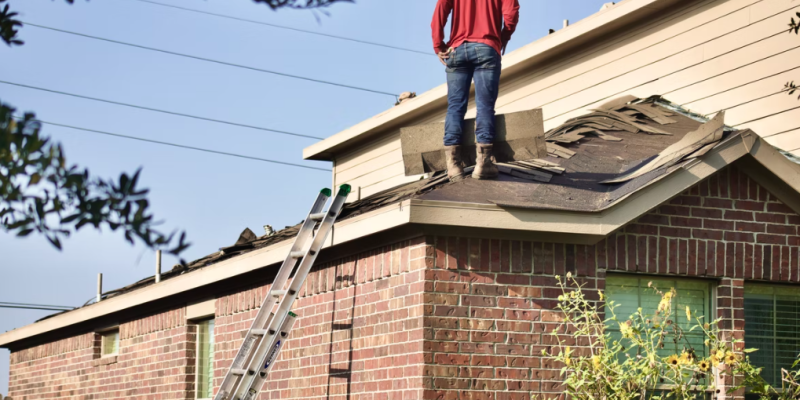Everyone loves renovating their homes. Whether it’s to turn our property into our dream design, or to sell for added value, we are always trying to improve our space. We even find ourselves glued to our television screens watching for tips as the likes of the DIY SOS team and George Clarke renovate properties to a high standard!

Photo By: Arizona Tile
However, it’s not always as straight forward as thinking of the work you want to do and running with it. While tasks such as replacing your roof or having solar panels fitted are safe to crack on with (although speaking to your council is still good practice), others aren’t. In certain cases, you will come up against factors which can grind your thought process to a halt and prevent it from becoming a reality. Here, we will look at the hidden factors of house renovations.
Is your home a listed building?
When you bought your property, you should have been told if it was a listed building. If it is, then chances are you will struggle to carry out any planned work without a fight. It is actually a criminal offence to simply go ahead with any work without the authorisation to do so. If you are unsure whether or not your property is a listed building, you can check at British Listed Buildings.

Photo By: Michelle Dirkse Interior Design
Electricity
Sometimes, work you plan to carry out will mean moving your electric meter and fuse box. However, you must make sure you don’t move it yourself. Why? Yep, you guessed it; this is also illegal. Usually, if it’s a move of less than 15 centimetres, this can be carried out by your energy supplier free of charge. But for larger-scale moves of over three metres, your local distribution company would have to move your mains supply before the electricity meter can be placed elsewhere. If this is something you require, make sure you book the relevant appointments to avoid long delays.
Notify your neighbours
With some work, you must notify your neighbours of your project thanks to the Party Wall Act of 1996. This occurs if you share a wall with another house and your work may undermine the structural integrity of the wall. Tasks such as fitting shelves and replastering aren’t included in this Act, however, if you were looking to undergo more extensive work it is something you must adhere to.
Although this seems like a very formal approach, it’s important to provide a ‘notice’ to your neighbour which outlines your prospective work. Present this to them alongside a copy of the Act two months before you intend to carry out the work. They will then have 14 days to raise any concerns they may have and provide written approval or rejection. Doing this will cover you if anything turns sour with said neighbour. If they do reject your proposal and it’s impossible to come to some form of agreement, you will be required to assign a surveyor who will then determine what work can be carried out.

Photo By: Red Door Homes, Inc.
Loft conversions
Often, to create more living space, people look at converting their lofts. However, make sure you get the correct building regulations approval. This is required to ensure there is sufficient structural strength to the floor, while also making sure that the existing roof and the structure’s stability isn’t jeopardized.
In many homes, the timber joists that form the floor of the loft space won’t be sturdy enough to support significant weight. This could cause issues if you plan to turn your loft space into a spare bedroom, for example, and without official planning meeting set regulations you could run into a host of problems. Perhaps surprisingly, any work that you carry out could indeed hinder your future sale if you don’t get the appropriate permission and paperwork. In some instances, you will be required to revert the property back to its former state if you haven’t gone through the correct channels when carrying out the work.
Besides your timber joists, you may also want to update your skirting boards and other moldings. You can consider installing skirting board covers if you do not have the time to tear out old skirting boards. This is a smart trick to save time, and money in the long run.
Garage conversions
Unlike loft conversions, you generally aren’t required to seek planning permission if it’s not your intention to enlarge a garage and increase the size of your home. If your sole purpose is to use the space for personal gain, then you should be able to carry out your intended work so long as you complete the work thoroughly and to the correct standard. However, it’s important to note that planning permission must be sought if you are looking to convert the space into a separate house.
Extensions
Extensions are ever popular in the world of renovations. However, not everyone understands the impact it may have on your property. For example, have you considered the impact an extension will have on your current boiler? Adding extra space will mean there’s an added demand on your hot water system and, in some cases, your boiler won’t be able to cope. Make sure you factor this in to any plan. You must also get building regulation approval – even if you don’t need planning permission due to using permitted development rights. In some cases, you may also need to pay a Community Infrastructure Levy, so it’s important to check this out prior to conducting any work.
While renovating your property can result in an amazing end product, getting to the final stage can be hard work and have many obstacles. For any work you may be thinking of carrying out, it’s important to carry out thorough research before you start so that hidden costs and issues don’t creep up on you.







